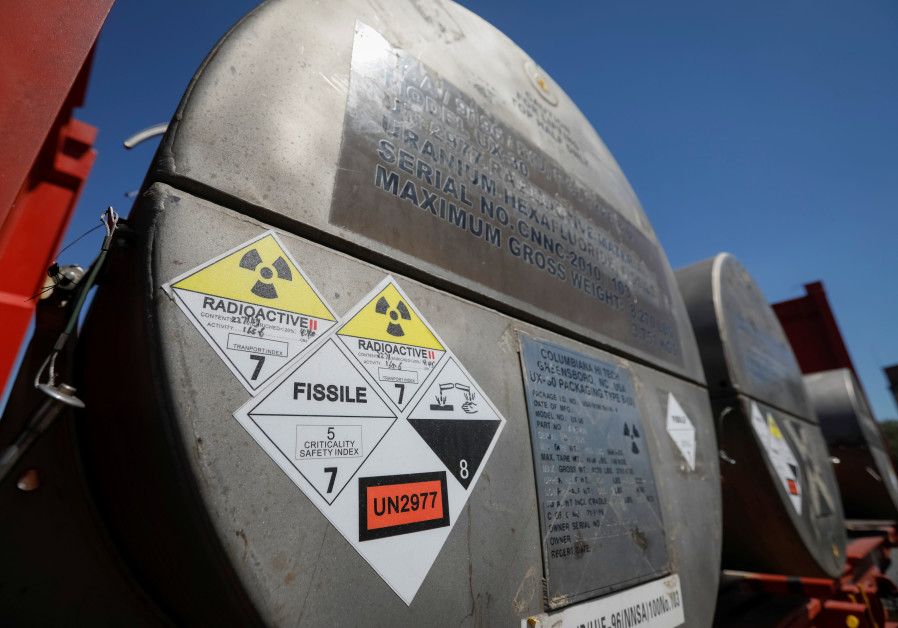Things could get worse in 60 days if Tehran carries out previous threats

Iran’s violation of nuclear limits by enriching uranium to the 5% level will reduce its breakout time to a nuclear weapon by approximately two months, former deputy director-general for safeguards at the International Atomic Energy Agency (IAEA) Olli Heinonen told The Jerusalem Post on Sunday.
After the Islamic republic’s threat in May that it would start reducing compliance with the 2015 nuclear deal if the world failed to drastically improve Tehran’s economic situation by July 7, Iran’s Atomic Energy Organization spokesman Behrouz Kamalvandi said on Sunday that this meant breaking the 3.67% uranium enrichment limit.
ran’s violation of nuclear limits by enriching uranium to the 5% level will reduce its breakout time to a nuclear weapon by approximately two months, former deputy director-general for safeguards at the International Atomic Energy Agency (IAEA) Olli Heinonen told The Jerusalem Post on Sunday.
After the Islamic republic’s threat in May that it would start reducing compliance with the 2015 nuclear deal if the world failed to drastically improve Tehran’s economic situation by July 7, Iran’s Atomic Energy Organization spokesman Behrouz Kamalvandi said on Sunday that this meant breaking the 3.67% uranium enrichment limit.
Once you go through the number of centrifuges Iran has currently installed to enrich uranium, moving from completing 50% to 70% of the enrichment effort eventually translates into knocking about two months off the clock to break out to a nuclear weapon.
But that is assuming a static number and the kind of centrifuge being used by Tehran.
The situation could get even worse if Iran starts bringing back some of its currently shelved centrifuges, especially at the 5% level, and even worse if it decides in 60 days to jump to the 20% enrichment level, as it seems to be threatening.
Getting into concrete numbers, Heinonen described how in its main nuclear facility of Natanz, Iran currently has 5,000 IR-1 centrifuges spinning with capacity of 1 SWU each.
But Iran has 12,000 more centrifuges in storage, plus another 1,000 IR-1s installed at the Fordow nuclear facility, he pointed out.
If Iran wants to cut the breakout time further, it can install additional centrifuges.
By installing 5,000 additional IR-1s in Natanz, the breakout time could be cut from 12 months to six months, he said.
However, it will take time to reinstall these additional centrifuges, which Heinonen estimated at an additional two to three months. Reducing the breakout time while adding in two to three months would mean about eight to nine months to break out, if Iran started to press forward immediately.
Heinonen recalled that Iran also has advanced IR-2m centrifuges, which have a capacity of around 4-5 SWU, making them around five times more powerful than the IR-1 centrifuges.
If Iran installs 1,000 IR-2ms along with an additional 5,000 IR-1s (bringing the number of IR-1s to 11,000), he said the breakout time would drop to seven to eight months, including taking into account the installation time.
If the Islamic republic reinstalled more IR-1 centrifuges (at maximum, it could have around 19,000 installed), the breakout time would drop below half a year. Moving on, he said that Iranian officials have said on several occasions that they may want to use the Fordow facility to produce 20% enriched uranium, which would “change the picture substantially.”
Heinonen said that enriching uranium up to the 20% level means 1,100/1,300 SWU, or 85% of the effort required to produce weapons-grade uranium.
Furthermore, Heinonen said that “when you go from 20% to higher enrichments, you do not need as many centrifuges… Exact numbers certainly depend on the characteristics of your centrifuges.”
Interestingly, he said that “if Iran wants to produce 5% enriched uranium in Natanz, they may need to alter the cascade designs, which are not ideal for that enrichment,” though he said the modifications would be minor.
There are also around 33 advanced IR-6 centrifuges operating – more than what is allowed by the nuclear deal – but the numbers are still low enough not to impact the picture as much as additional IR-1s and IR-2ms, he has previously told the Post.
As reported by The Jerusalem Post
